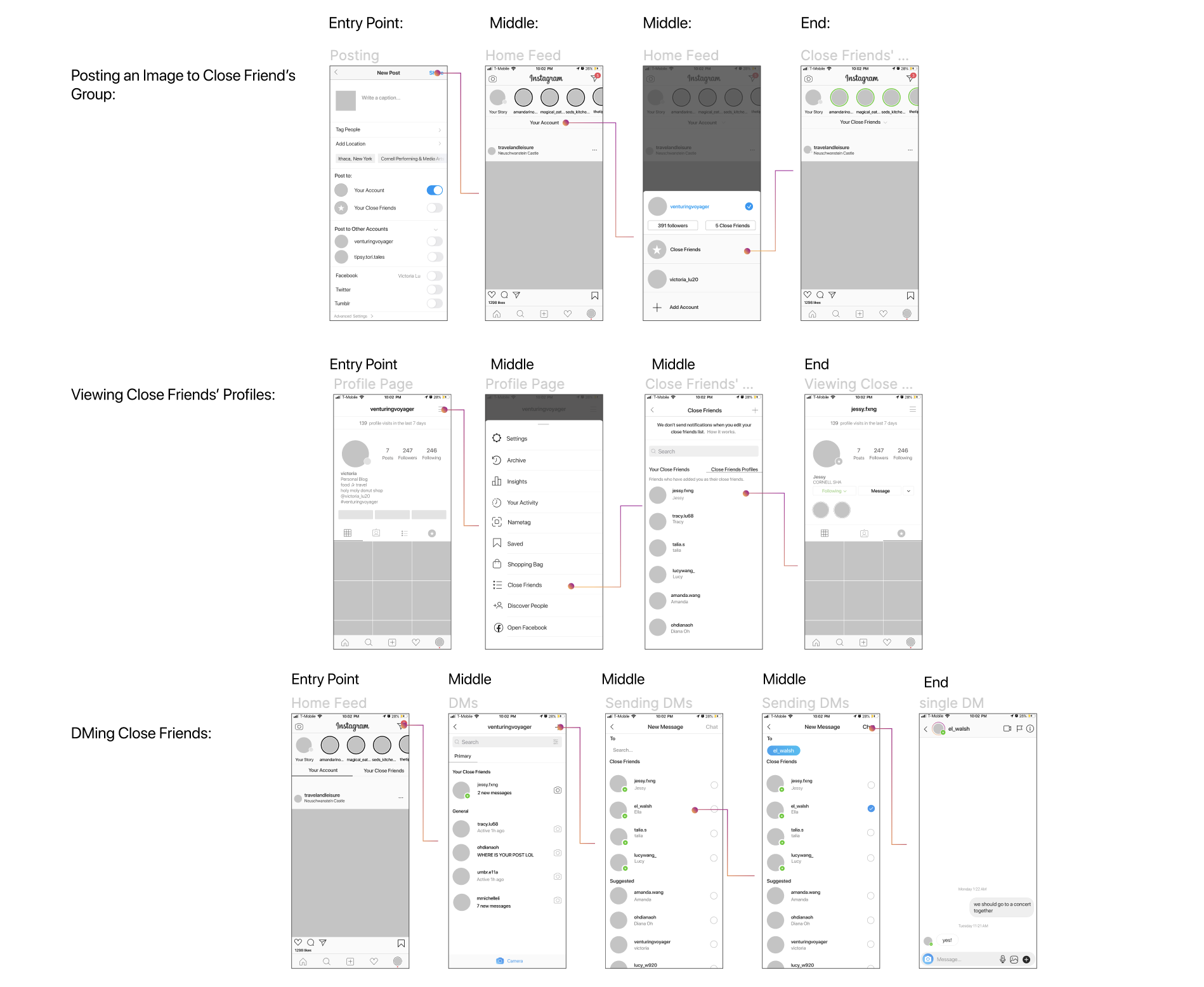
one platform, two functions
Overview: As one of the most popular social media platforms, Instagram is primarily based on photo-sharing to connect users with their followers and followings. Having garnered millions of users, the Instagram that we knew today has undergone a variety of changes in the last decade, such as the logo change and the inclusion of stories and close friend lists.
The feature that I am introducing is essentially merging "Rinsta" and "Finsta" together on one account. In order to merge these two, I designed a feature that enables users to post to their close friends list, which essentially acts as a "Finsta" for users because accounts within the close friends list are those that the users want to post separate and (most likely) more personal content.






